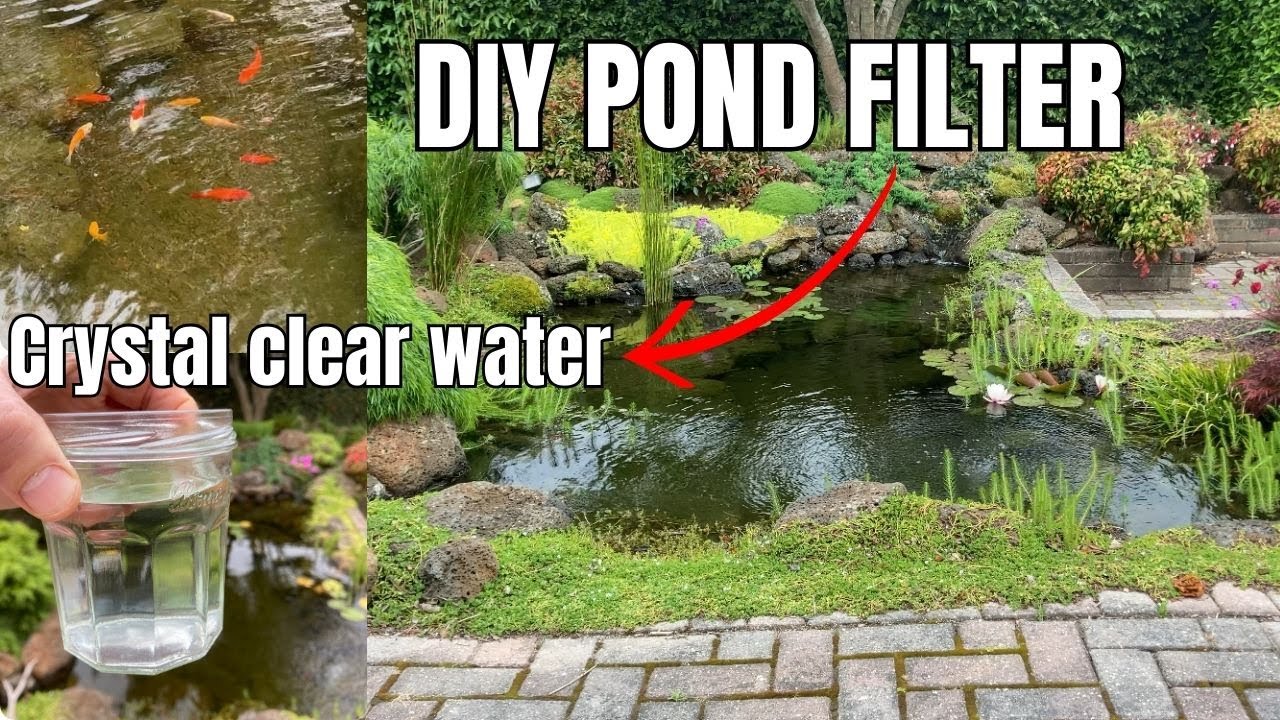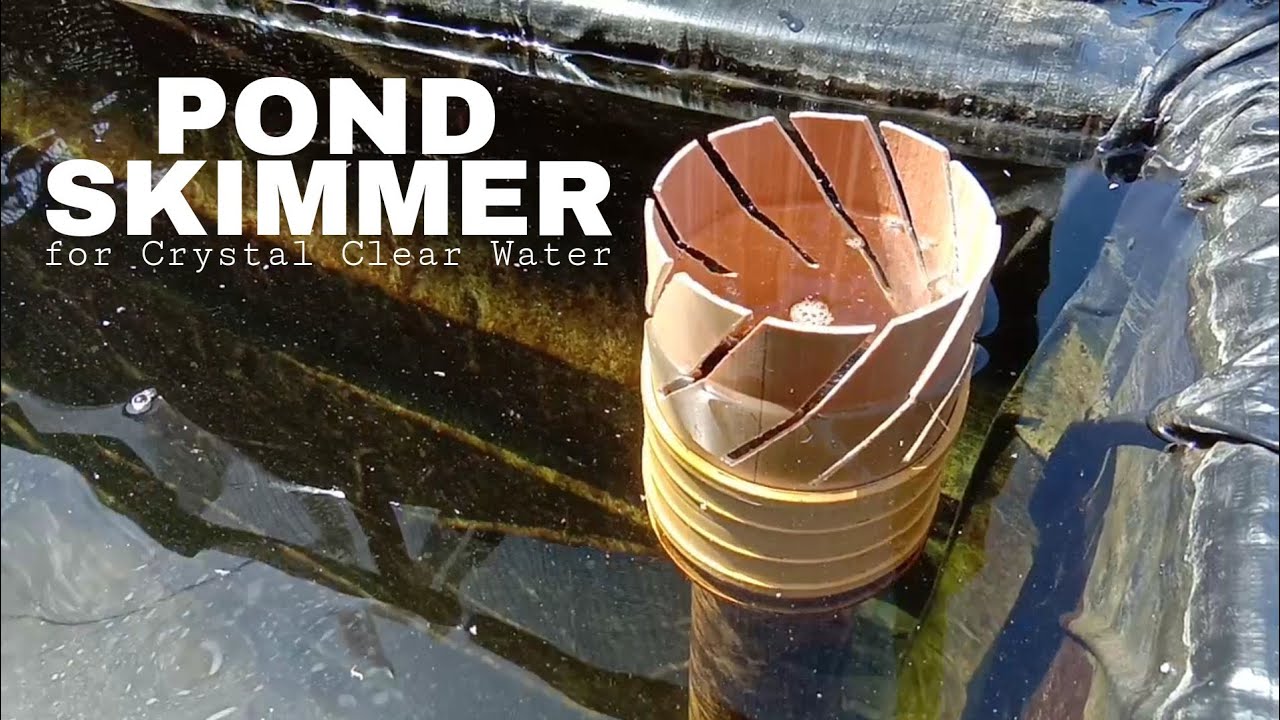If you’ve ever gazed into a pond so clear you could count the scales on every fish, chances are a bog filter was quietly doing the heavy lifting in the background. Unlike pressurized canisters or over-the-rim boxes, a bog filter turns one corner of your pond into a living wetland that polishes water around the clock, without hum or hiss. Best of all, you can build this diy bog filter for pond with a shovel, a few plumbing parts, and a weekend’s worth of sweat—then super-charge it with Poposoap’s solar pumps, filter boxes, and aerators to create a maintenance-light ecosystem. Below is your step-by-step guide, presented for real-world hobbyists who care less about laboratory jargon and more about crystal-clear results.
Why DIY Bog Filters Make Your Pond Crystal-Clear
A bog filter channels pond water through a shallow bed of gravel and aquatic plants. In that slow, oxygen-rich journey, solids settle, fine debris gets trapped, and—most importantly—billions of nitrifying bacteria colonize every pebble. The result? Ammonia and nitrite vanish, algae has nothing left to eat, and the water that flows back into the main pond is as clear as a mountain spring. Because the bog’s surface lives above water, you also gain a lush planter of irises, arrowhead, or dwarf cattails that turns filtration into landscaping art. No wonder “bog filter diy” threads dominate pond forums each spring.
What Is a Bog Filter—Biology Meets Aesthetics

At heart, a bog filter is simply:
- A water-tight basin (often an annex or raised section of the main pond)
- 30–40 cm of pea gravel or expanded shale
- Slow, upward water flow delivered by a pump
- Plant roots that wick up nutrients
Think of it as a thin slice of marsh grafted onto your water garden. Unlike conventional media that clogs and needs weekly rinsing, a bog’s gravel never leaves the filter; bacteria, worms, and plant roots continually break down captured waste. That’s the magic that keeps a diy bog filter running for years with only seasonal tweaks.
Designing Your Bog Filter (Size & Flow)

The golden ratio: dedicate 10–15 percent of your pond’s surface area to the bog. For a 5 × 4 m pond (20 m²), a 2 m² bog will easily keep up with fish loads. Depth should remain shallow—25 cm of water above the gravel at most—so oxygen penetrates and emergent plants root securely.
Target turnover: deliver the entire pond volume through the bog once every two hours. If you keep 4 000 L, aim for a 2 000 L/h pump after head losses. That gentle push prevents channels from forming in the gravel yet avoids blasting plants out of bed.
A quick diy bog filter diagram in your notebook—bog outline, inlet grid, return spillway—will save headaches when plumbing day arrives.
Materials & Setup
- EPDM liner cut or preformed tub for the bog basin
- UV-stable 25 mm PVC flex pipe
- Manifold of 19 mm drill-holed pipe (delivers even flow)
- Washed pea gravel (no limestone)
- Mixed emergent plants (iris, sweet flag, dwarf papyrus)
- Poposoap Pond Filter Box (optional but clever upgrade—see below) Poposoap Product Manual…
- Poposoap Solar Fountain or AC pump sized to flow requirement Poposoap Product Manual…
Lay the liner, set the perforated manifold flat on the floor, cover with 30–40 cm gravel, then backfill soil just around plant root balls. Keep the last 5 cm gravel-only to curb algae growth.
Plumbing & Flow Control
Run flex hose from your pond’s skimmer or intake the screen to the pump outlet. Situate the pump either in a Poposoap Filter Box to trap leaves first or below a Poposoap Waterfall Kit if you already have one in play. The hose feeds the manifold under the bog. Water rises through gravel, overflows a shallow lip, and spills back via a mini cascade. Tune flow with a ball valve until the surface barely ripples—ideal for bacteria and plants.
For off-grid builds, Poposoap’s 30–50 W Solar Fountain kits move 320–580 GPH (1 200–2 200 L/h) in full sun—plenty for medium bogs and dramatically cheaper than trenching electrical lines. Poposoap Product Manual…
Operation & Maintenance
- Month 1: Expect water to cloud as gravel dust and initial algae bloom. Resist the urge to blast-clean; clarity will follow as bacteria establish.
- Month 2–3: Plants explode in growth. Trim tops weekly to export bound nutrients.
- Twice a year: With pump off, stir one square foot of gravel gently; cloudy plume signals trapped fines being lifted out. Syphon off, then move to next patch next month—never disturb the whole bed at once.
- Winter: In freezing climates, swap to a Poposoap Solar Pond Aerator that bubbles warm bottom water through the bog, preventing ice stagnation and keeping bacteria ticking over. Poposoap Product Manual…
Most keepers report they spend less time on a bog than on any canister they ever owned.
Benefits Summary
- Biological powerhouse – square meters of gravel dwarf any pad-based media.
- Zero consumables – no sponges to replace.
- Landscape upgrade – flowering bog plants hide liner edges.
- Solar synergy – Poposoap’s Solar Fountain circulates the top layer, Poposoap Pond Filters catch coarse waste before it hits the bog, and Poposoap Aerators inject oxygen where roots need it most; together they form an energy-thrifty, closed-loop ecosystem in line with the brand’s “hassle-free garden products” vision.
Product Recommendations
- Poposoap 20W Solar Fountain Kit—pushes ~1,000 L/h in bright sun, perfect as the bog’s heart pump; anti-clog rotor and detachable nozzle plate simplify gravel-grain ingestion worries.
- Poposoap Pond Filter—drop it before the pump as a pre-filter; stainless mesh plus layered foam spares the gravel bed from leaf overload and provides an inspection point that pops open tool-free.
- Poposoap Solar Pond Aerator—adds O₂ at night or over winter without grid electricity; mounting stake pivots the panel for seasonal sun angles.
- Poposoap Warm-White Pond Lights—hide one fixture beneath the return spill; evening glow turns the bog into a moonlit marsh without wiring trenches.
All components share snap-latch housings and rugged ABS shells, so one brand fits all and nothing rusts away in splash zones.
FAQs
Q: Will a bog filter eliminate green-water algae on its own?
A: Yes—once established. Give it four to six weeks of warm weather. Meanwhile, shade the pond and avoid overfeeding.
Q: Can I see a diy bog filter diagram?
A: Picture a shallow rectangle of gravel with a perforated grid on the bottom and plants on top; water flows up then spills over one edge. Sketch it once, build it forever.
Q: What if roots clog the pipe grid?
A: Use 25 mm pipe and 6 mm holes; roots rarely pass that restriction. An annual backflush via garden hose keeps it free.
Q: How deep can fish waste settle before the bog clogs?
A: Because flow is upward, solids fall in the main pond, not the bog. Vacuum pond bottom annually; the bog keeps filtering.
Conclusion & Call-to-Action

A diy bog filter is equal parts science project and garden artistry: you’re building a self-cleaning wetland that outperforms gadgets while looking like a designer planter. Size it at 10–15 % of pond surface, move water slowly upward, plant greedily, and the biology will handle the rest. Add Poposoap’s solar fountain for circulation, their pond filter box for pre-screening, and a whisper-quiet aerator for round-the-clock oxygen, and you’ll have a system that mirrors Poposoap’s ethos of “beauty, joy, and protection” without touching the power grid.
So, grab your shovel, map out that diy bog filter diagram, and claim a corner of your pond for plants and microbes. The payoff—glass-clear water, healthier fish, and a living mosaic of greenery—will convince every visitor that wetlands belong in backyards, and that a little DIY spirit beats store-bought gizmos every time.





Leave a comment
All comments are moderated before being published.
This site is protected by hCaptcha and the hCaptcha Privacy Policy and Terms of Service apply.